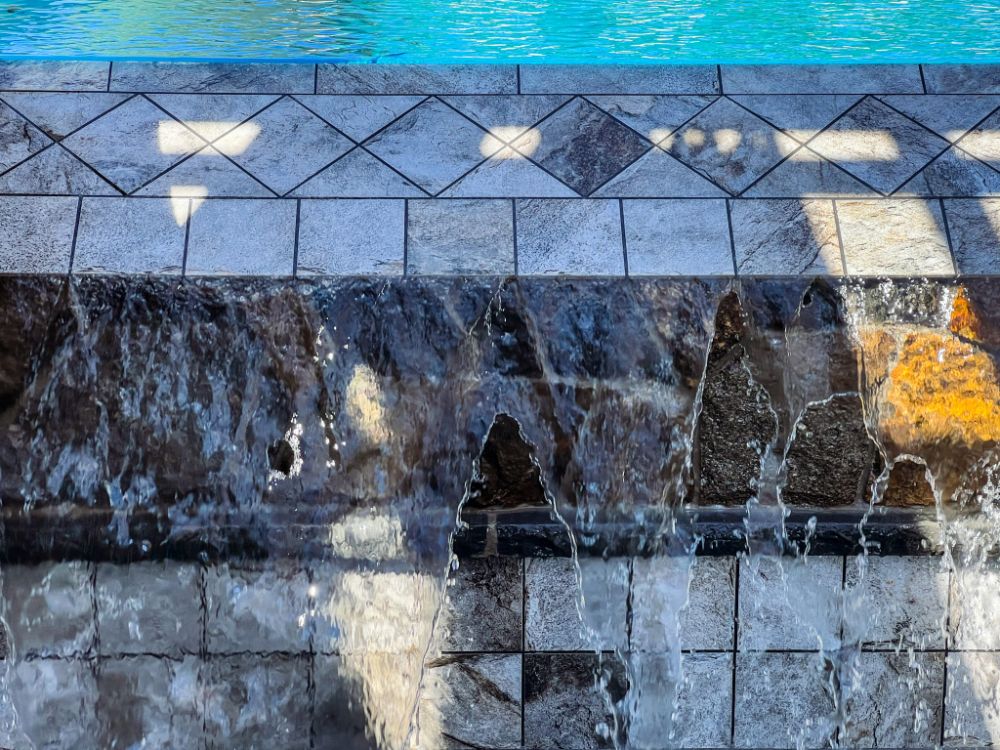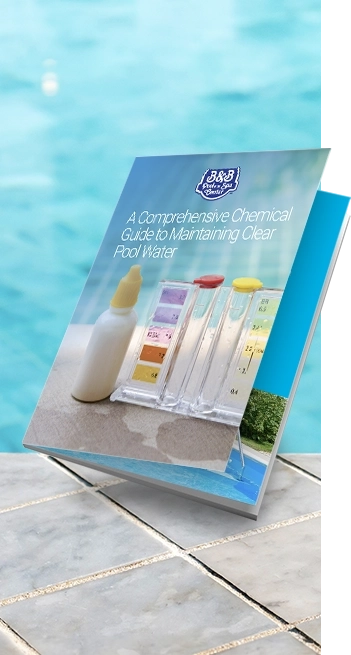Exploring Tile Options for Your Swimming Pool
Pool Builder, Pools
One of the best parts of designing your swimming pool is exploring the vast amount of options available. Not only do you have different features, shapes, and sizes to consider, but also different pool liner designs and tiling options.
Tiling enhances its visual appeal, durability, and functionality. Not to mention the sophisticated and dramatic look that ornate tile work can bring. This article will discuss the pros and cons of different tile types, explore design ideas, and provide tips for maintaining your pool tiles.
Tile Types for Swimming Pools
When you think of tile work, you may think of how costly such a job can be. This is especially true when considering tiling a structure such as a swimming pool. And you’re not wrong, as tiling is an investment and can vary wildly in price. Furthermore, tiling is precision work and will require professional craftsmen to lay the tile in a proper and secure fashion.
However, with the right guidance and some creativity, you can design a beautifully tiled pool suited to your preferences and budget. Let’s take a look at your options, shall we?

Ceramic Tile
A popular choice for swimming pools due to their durability, affordability, and versatility, ceramic tiles are a great option. They come in various colors, shapes, sizes, and patterns, allowing you to customize the look of your pool. Some ceramic tiles are also resistant to chemicals, UV rays, and frost, making them suitable for outdoor pools in different climates.
It’s important to note that just as a pool liner can fade and crack due to different weather conditions and chemical use, so can ceramic tiles. You can take preventative measures to extend the life of your tile work, such as covering your pool with a UV-resistant safety cover when not in use. They may also require frequent cleaning to prevent stains and algae growth.
Porcelain Tile
Deriving from ceramic tile, porcelain is denser, harder, and more resistant to water and wear. They’re less likely to crack, fade, or stain than regular ceramic tiles, making them ideal for high-traffic areas. However, they tend to be slippery when wet, so a textured or slip-resistant surface should be considered for safety reasons.
Porcelain is more expensive and may require experienced installation to ensure a proper bond and grout application. However, with a wide range of textures, you can create a sophisticated or contemporary look for your pool.
Glass Tile
If you dream of a swimming pool that will leave a lasting impression, glass tiles are a stunning option. They reflect light and color to create a shimmering effect. Though it’s a more expensive alternative to porcelain and ceramic, glass tiles can be arranged in intricate patterns or mosaics, giving you that luxurious look and feel to your backyard space.
They’re resistant to water, chemicals, and sudden changes in temperature, frost proof and UV resistant. These tiles are worth the investment as they are easier to maintain and have a longer lifespan. However, due to the fragile nature of this tile type, special installation techniques and materials are required. If not installed properly, they may be prone to cracking and require more frequent replacement than other tile types.

Natural Stone Tiles
Suppose you want to create a backyard that transports you into a natural oasis and instantly puts you at ease. In that case, natural stone tiles may be what you want. Travertine, limestone, and granite can add a touch of elegance and luxury to your pool and create a seamless transition between your pool and the surrounding landscape, as they blend well with rocks, plants, and other natural elements.
Though durable, natural stone tiles are porous, which means they can absorb water and chemicals, and require regular sealing to prevent staining and deterioration. Natural stone tile is more costly and challenging to install than other tile types, as they need a level and stable surface and proper drainage.
Design Elements for Tiled Pools
Once you’ve chosen your desired tile, you can get to the exciting part: exploring different design options that’ll enhance your pool’s style and functionality, and let’s not forget your enjoyment! You may even choose your tile based on a design you want to see come to life.
The sky’s the limit…okay, maybe your wallet is too, but that doesn’t mean you can’t bring elegance and beauty to your space. Either way, have fun, be daring and bold. This is your investment and should be created to bring enjoyment to your backyard space and those you share it with!
- Create a focal point: Use different colors or patterns to create a focal point in your pool, such as a mosaic, border, or logo. This can add visual interest and personality to your pool.
- Add texture: Tiles with a textured or embossed surface help prevent slips and falls. It also adds a tactile element to your pool. You can also mix and match textures for added drama.
- Play with shapes and sizes: Experiment with various shapes and sizes, such as hexagons, diamonds, or large-format tiles, to create a unique pattern or a mosaic to achieve a modern look.
- Consider the waterline: The waterline is the area where the water meets the tile surface and is an important design element in pool design. You can use tiles of a contrasting color or pattern to create a distinctive waterline. Or extend the tile surface to cover the entire pool wall for a seamless look.
Keep Your Tiled Pool Looking Its Best
To keep your tiled pool in the best condition and extend its lifespan, maintenance is necessary, and while some tiles may need more care than others, it’s a good rule of thumb to keep a regular maintenance schedule to minimize risk potential. Let’s take a look!

Clean the tiles regularly with a mild detergent and a soft brush or cloth. Avoid using abrasive cleaners or scrubbers that can scratch or damage the tiles.
Monitor the water chemistry and adjust the pH, alkalinity, and chlorine levels to prevent corrosion, staining, or algae growth. You can use a test kit or a professional service to ensure proper water balance.
Check the grout lines and replace any cracked or missing grout to prevent water from seeping behind the tiles and causing damage.
Inspect the tiles and the surrounding deck for cracks, chips, or other signs of wear and tear, and repair or replace them promptly to avoid further damage.
Other measures you can take include opening and closing your pool properly and covering your pool when not in use for extended periods. Off-season maintenance is also a great practice to minimize potential problems in the future.
By following these maintenance tips you can keep your tiled pool looking gorgeous and luxurious year after year!
Do You Have Any Grand Ideas for Your Tiled Pool?
Tiling your swimming pool can transform its look, durability, and functionality. With a plethora of design possibilities, you can customize your pool to suit your style and budget. Whether you choose ceramic, porcelain, glass, or natural stone tiles, you can create a breathtaking swimming pool that you’ll want to enjoy all year round. By exploring different design ideas, you can create a stunning, long-lasting tiled pool that adds value and enhances your outdoor living space.


